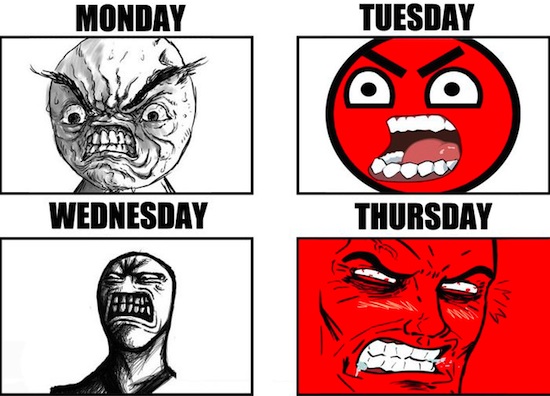Many community managers are either too slow or too fast to remove antagonistic members. They either remove the antagonistic member without fully realizing the role this individual plays within the community, or they spend copious amounts of time trying to convert the antagonist into a happy member.
One community manager I spoke with a few weeks ago had recently spent half a day resolving a problem with antagonistic members. That’s insane, what happens when you have 20 antagonistic members a week? Are you going to spend ALL your time on your community’s unhappy participants?
Antagonistic members aren’t always bad. They can provoke discussions, highlight topics that other members were hesitant to address, put forward opposing (if unpopular) view- points, and prevent group-think in communities. Communities where everyone agrees and gets along are dull.
Even the most antagonistic members can unite the community against them. This sounds crazy (and I’ve received plenty of criticism for it), but a community united against a few individuals can actually derive benefits.
The question you need to ask is: Does this antagonistic member kill or boost discussions?

Antagonistic members might not be breaking any rules, but may still have to go simply by virtue of squelching every discussion they participate in. Otherwise, antagonistic members should be allowed to stay because they have a beneficial impact upon the community.
Don’t fall into the reactivity trap. Don’t get sucked in to spending hours of your time trying to deal with antagonistic members. Make quick decisions and take quick actions.
I often offer clients a six-step escalation process:
- Do nothing. This is my favorite step. It doesn’t require much work. If neither the number of participating members nor the quantity of contributions is declining, let it slide.
- Reason/befriend/distract. If the antagonistic member is clearly a problem, you react in one of three ways. First, if it’s likely they don’t realize they’re antagonizing members (this is surprisingly common, usually a personality issue), explain they need to tone their language down because members have been complaining. If they have a genuine grievance or concern, try to ask them what the real problem is and how you can help solve it.Finally, if they are focused upon one particular issue, distract them by giving them a column, or responsibility for a certain topic to express their viewpoint.
- Suspend. If none of the above works, suspend the member and explain why. Suspension can range from three days (one day isn’t enough) to one week. You can do this manually or use any system you like.
- Ban. If after a suspension they still cause problems, remove them from the community. Lock the account or ban the IP address from registering an account.
- Edit/Repel. Some members continue to register new accounts (or mask their IP address). They’re intent on causing trouble. Some community managers get caught in a cat-and-mouse game. They ban the new accounts and others continue to spring up. An endurance game, it continues until one side gets tired. It’s best left to volunteers. I’ve had some success by editing comments posted by the member to something softer (usually complimenting other members).
- Contact ISP/Police. If the member continues to return or is engaged in threatening/illegal activity, either contact their ISP or the police. You can jump straight to this stage if necessary.
The goal of this process is to move from one stage to the next whilst spending as little time on antagonistic members as possible. The danger is rarely antagonistic members themselves; it’s the amount of time you spend on them. Over time, you neglect your happy members and can lose many members as a result. Make sure that doesn’t happen to you.
Images courtesy of th02 and raidho36
